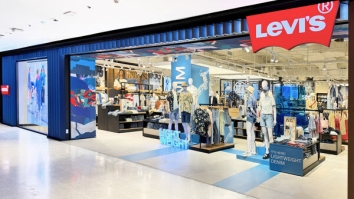The Seven Dictums of a Future Commerce Strategy
By Srjana BalrajModernization of commerce has emerged as a fundamental need for the future of retailing.
Unified commerce has been, and continues to be, the holy grail for most retailers.
The recent pandemic propelled complacent retailers to innovate. Several multi-year transformations and innovations like curbside pickup, scan and pay, and appointment-based shopping were introduced in record time.
However, e-commerce sites were choked beyond capacity, with prolonged wait times for entering online sites and obtaining delivery slots. Modernization of commerce has emerged as a fundamental need for the future of retailing. The rise of newer channels, subscriptions and rentals, and emerging payment types like cryptocurrency is also making it vital for commerce to be versatile and lend itself to any new business models.
This paper discusses the seven dictums that retailers should adopt for getting their commerce strategy right.
Enabling Omnichannel Retail by Default
The biggest challenge that retailers face in providing a seamless omnichannel experience is the existence of disparate checkout systems for offline and online channels point of sale and e-commerce. It calls for complex point-to-point integrations between these systems, making the application landscape complex and expensive to maintain. The core of most checkout platforms is built on common domains such as product, cart, payment, pricing, promotion, tax, receipt, and returns, resulting in 70% to 80% duplication of features or capabilities. Retailers must find a way to de-duplicate commerce elements to enable omnichannel by default (see Figure 1).
Figure 1: Unified commerce blueprint

The Seven Dictums of a Future Commerce Strategy
Here are the top seven strategies that retailers must adopt for getting their commerce strategy right.
Dictum #1: Bind Associated Data with APIs to Create a Single Source of Truth
The reference data used by commerce applications are scattered across retail enterprise systems—master data management, product information management, content management, and multiple third-party data sources. Today, creating a single source of truth does not necessarily mean merging all the data sources into one humongous database. Data APIs are enabling the superconvergence of data. They can unify traditional reference data with AI-enriched data, providing contextual, relevant, and personalized information for various scenarios. For example, apart from storing core and rich product attributes, product APIs can also combine them with external data such as product reviews, ratings, seller ratings, and even sustainability scores to fetch the right product for the right user.
Dictum #2: De-duplicate Commerce Platforms to Design Unified Commerce Capability
The lack of industry-approved common standards for data models or schemas makes it challenging to augment monolithic applications of yesteryears with channel context and attributes. By breaking them into domain-driven capabilities, enterprises can shift to microservices and API-based architecture allowing greater interoperability with other enterprise APIs (see Figure 2). These APIs can also be individually upgraded to cater to future business needs.
For instance, the Apply Pricing API may be designed to cater to B2C to begin with and can be further evolved with additional aspects of B2B pricing or marketplace. This enables an incremental approach to transformation rather than replacing legacy commerce applications in their entirety. A key aspect is to cater to offline channels as well as newer business models, which is often overlooked by most vendors and enterprises.
Figure 2: Democratization of commerce capabilities

Dictum #3: Adopt Composable Commerce for Rapid and Modularized Innovation
Breaking away from a monolith to a microservices architecture is the right approach. However, it is an arduous and time-consuming activity, making the question of "build" versus "buy" more relevant than ever before.
Gartner* advises application leaders in organizations to prepare for a composable approach using packaged business capabilities to future proof their digital experience. Composable commerce offers the flexibility to buy only what enterprises need and build what they can on their own, with the added flexibility of interchanging their approach as they go along the journey. It is also very relevant given the proliferation of new retail models, payment currencies, and methods.
Composable commerce also frees businesses from the dreaded vendor lock-in scenario, enabling them to replace and substitute capabilities of one vendor with another, without impacting other components in their enterprise.
Dictum #4: Create a Continuum of Mission-Based Journeys
Owing to the fast evolution of customer journeys, achieving seamless customer journeys for today’s touchpoints are not viable goals for truly rewarding commerce transformations.
The ability to cater to evolving touchpoints quickly is a key competitive differentiator. It is imperative that the underlying commerce and fulfilment capabilities be designed as open, granular, flexible, and scalable capability APIs that can be assembled to create a mix of customer journeys. And new capabilities can be introduced incrementally to the API library for any new business model (see Figure 3).
Figure 3: Customer journeys and capabilities

Dictum #5: Introduce Intelligence at Every Stage of the Commerce Journey for Unique Experiences
Algorithmic interventions in shopping journeys are crucial to tide over emerging complexities and provide a seamless shopping experience. In spite of the ginormous data available, retailers are still far from providing the best shopping experience to their customers, be it online or in stores. Intelligent algorithms are adept at connecting the dots when employed appropriately and retailers should not shy away from introducing artificial intelligence (AI)/machine learning (ML) technologies in their landscape.
Another foundational element for this is to unify data at the transactional level. When in-store transactions and online purchases are stored in different repositories, it is tedious to tie them together to understand omnichannel opportunities. Unified transactions will contain all the elements of a customer’s interaction such as the items that are part of the purchase or return; fulfilment method and associated details; customer details, tax information, payments, channel and location information; as well as the proof of purchase details.
This becomes an invaluable asset not just from the perspective of managing internal financials and easing business operations but also allows retailers to run powerful algorithms to obtain valuable insights on shopper behaviour and contextualize the future experience.
Dictum #6: Define New Metrics Aligned with Unified Strategies
As online and offline channels sync and customer journeys become non-linear, many questions arise to understand the impact of one channel on the other. For example:
- How to measure the impact of online offers in-store sales and vice versa?
- How to measure the additional sales in-store through buy online, pickup in-store (BOPIS)/click and collect journey?
- How to measure online browsing leading to in-store conversion?
Though there are new omnichannel KPIs, the metrics are not fine-tuned to the future ways of shopping and channel interactions, and offer little help in crafting future strategies for customer engagement.
There are many more scenarios that require retailers to understand the impact of one channel on the other:
- Abandoned or idle carts online converted through an in-store purchase
- Online recommendations resulting in an in-store purchase
- Conversion on categories in store based on dwell time online
- Online sales generated from in-store owing to out of stock or price disparity
- Online sales from associate clienteling
Dictum #7: Build New Operating Models to Forge New Business Models
With the goals and vision of each channel being different, defining channel strategies in silos pose a huge risk. Omnichannel teams interweaving business and IT goals are very crucial for a successful transformation to unified commerce.
Many tier 1 retailers are reorganizing their teams to achieve the unified vision and new roles are constantly emerging, such as API Manager. This is a key role to govern APIs across the enterprise and ensure that all APIs adhere to standards and security protocols. And the domain teams must own capabilities catering to the requirements of all channels and be ready to shift to new business models quickly.
Several new business models are emerging that are appealing to both customers and organizations. For example, subscription models and rentals. Panera bread has quoted that they want to be the Netflix for coffee with the $8.99 subscription-based coffee offer. Just as Uberification has come to denote on-demand services, for products it could become Netflixification soon. Cryptocurrency is another technology that is expected to see wide adoption.
This completely decentralized, cross-border medium of exchange is likely to replace traditional tokens and settlements. Cross-industry influences will play a significant role in shaping up commerce in the coming years. It is vital for commerce to be versatile and lend itself to any new business models.
Conclusion
Very often transformation is misunderstood as completely shelving out older systems and replacing them with modern platforms, involving multi-year commitments manned by massive teams. While this was perhaps true decades ago, new technologies like microservices, API, cloud, AI/ML, IoT, edge computing, and blockchain have made it possible for enterprises to realize their vision on a continuous, incremental basis, while calibrating to the advancements in their transaction journey. As we move towards a circular economy, the collective goal will be about becoming purpose-led and sustainable. Commerce will be no exception to this, and continuous transformation will help organizations build for now and for the future.
Reference:
*Gartner Research, “Future of Applications: Delivering the Composable Enterprise”, accessed May 2021, https://www.gartner.com/en/doc/465932-future-of-applications-delivering-the-composable-enterprise
























 Advertise
Advertise







